Back in the Early Holocene, when CO2 levels were said to be ~255 ppm, Arctic Svalbard was warm enough to accommodate abundant numbers of thermophiles, or warmth-demanding species. Only “remnants” of these species and their habitat exist in today’s much-colder Arctic.
With the exception of a few centuries in recent millennia, today’s Svalbard (Arctic) is the most glaciated it has been in the last 10,000 years (see the blue trend line in the below chart from Brožová et al., 2023).
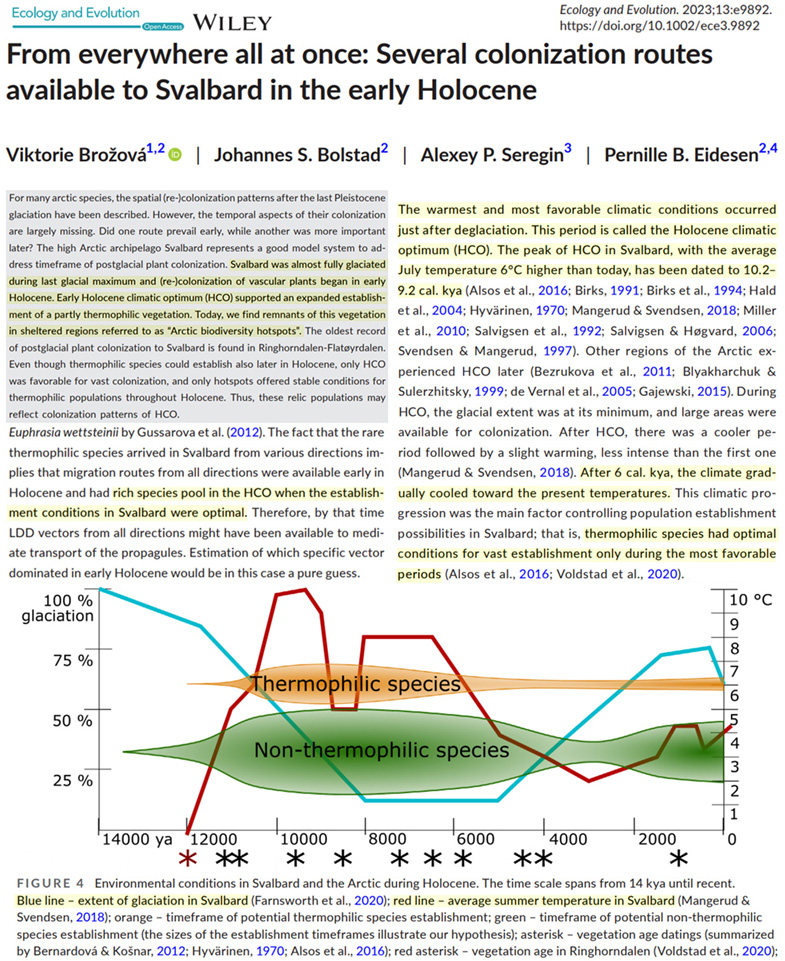
Image Source: Brožová et al., 2023
This region is today about 6°C colder than it was during the early Holocene (~10,000 to 8,000 years ago), a climatic period scientists characterize as an optimum, or “most favorable,” for a “rich species pool” of thermophiles.
The sea surface temperatures (SSTs) in the western Barents Sea were as warm as 13°C and “sea ice-free during most of the mid-Holocene” (Łącka et al., 2019). In contrast, today’s SST in this region are as cold as they were during the last glacial (2-4°C), when CO2 hovered near 200 ppm. Rapid double-digit SST fluctuations, varying from 3 to 13°C, have been ongoing throughout the Holocene.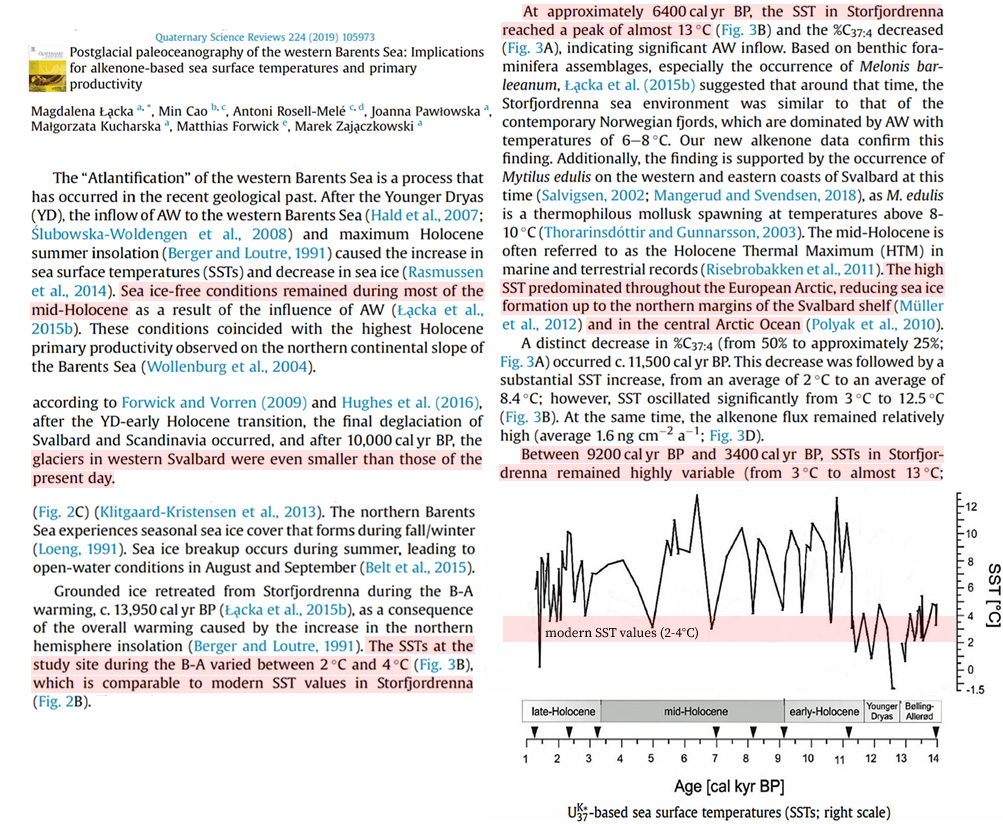
Image Source: Łącka et al., 2019
The sea ice in the Barents Sea surrounding Svalbard is today nearly the most extensive (80% coverage) of the last 10,000 years. In contrast, when CO2 levels were below 260 ppm, this region of the Arctic was sea ice-free, or nearly so (Koseoglu, 2019).
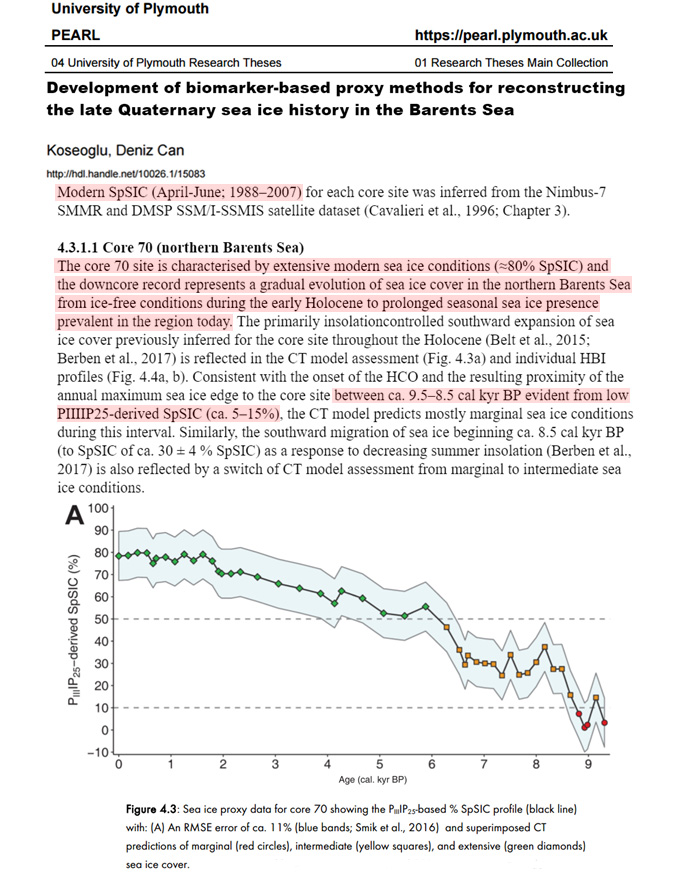
Image Source: Koseoglu, 2019
William Barentsz discovered Arctic Svalbard as he sailed through an open-water Arctic Ocean using a wooden boat (with no ice breakers) in early June, 1596.
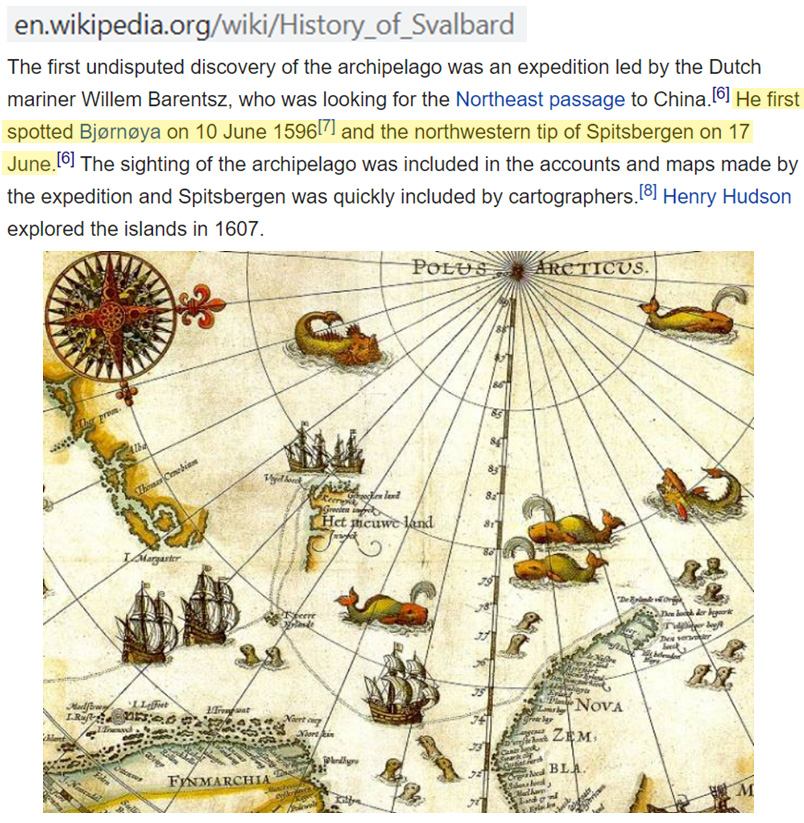
Image Source: Wikipedia
In September, 2019, the month of the year with least extensive sea ice, 16 scientists needed to be rescued by helicopters because the massive ship they were using to study climate change couldn’t cut through the ice-covered waters near Svalbard.
In the 1500s, the Western Arctic was sea ice free for about 4-5 months of the year. Today – and steadily since 1800 – the Western Arctic is sea ice free only about 2 weeks of the year (Porter et al., 2019).
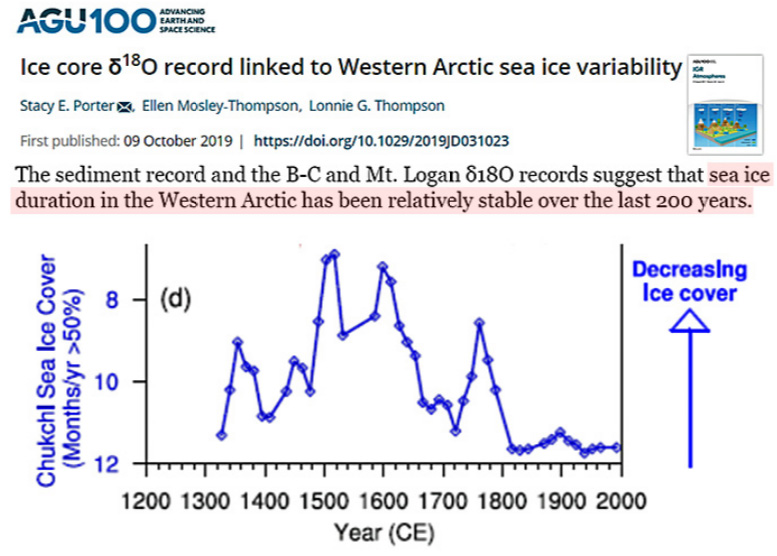
Image Source: Porter et al., 2019
Finally, according to Rosel et al., 2018, Arctic sea ice was actually thicker in 2015 (1.56 m) and 2017 (1.65 m) than it was in 1955 (0.94 m) in a region north of Svalbard.
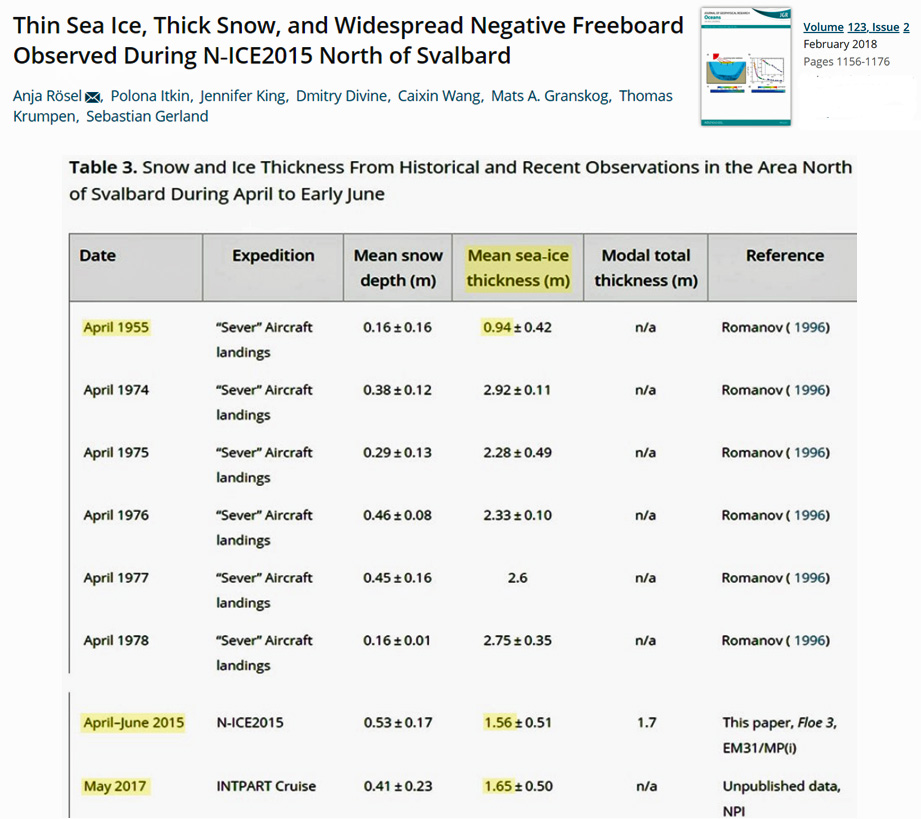





William Barentsz and fellow explores were tough but the Arctic was tougher.
Wikipedia has an entry. Well worth reading.
[…] Related: Scientists Say A 6°C Warmer-Than-Today Arctic Is ‘Optimal’ For Thermophile Species […]
Interesting, but irrelevant. Facts are unimportant nowadays – “correct” belief is essential.
Argument from the CO2 alarmist side:
1. Maybe the 1500s were warmer IN THE ARCTIC, but there’s no (definitive proof the warming was global, so your 1500s ARCTIC data may not be relevant.
2. Okay, if we assume globally it WAS warmer in the 1500s, at 255 ppm CO2, something must have been different, changed from CO2 to cause it and
3. You have no idea what changed BUT
4. The ONLY thing that has changed since 1850 to now is ppm CO2.
Therefore,
5.the historical data is both uncertain on a global level and of unknown cause even by your “scientists”, no smoking gun, and
6. The current warming has only ONE identified causative agent, A-CO2.
Today is a special case. History is not useful in understanding the presrent. Moreover,the Uncertainty Principle says that we should move aggressively on CO2 reduction IN CASE CO2 is the cause,because global warming is an existential threat to the biosphere. We must at least try to save the planet.
Until we can prove
1. Historical warm periods were global (denied by Mann, Gore et al),
2. We understand the mechanism for the warming.
3. We can explain ALL current warming as a result of the same processes at work,
we’re hooked to shut down the CO2 alarm.
Even if we were to prove nonCO2 warming, we would still be assailed by the CO2 mob:
“CO2 is making a natural but terrible event an existential problem!”
I think only one if two things can shut down the Thunberg Panic. A global cooling within 10 years years, or an energy-ecinomic crisis that causes governments to refuse to hobble themselves fir no effect while China, India et al CO2 increases explode.